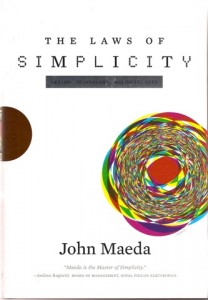The one-sentence summary
Simplicity equals sanity, so make everything as simple as possible, but no simpler.
- Simplicity = Sanity. There are ten laws of simplicity:
1. Reduce. The simplest way to achieve simplicity is through thoughtful reduction.
2. Organise. Organisation makes a system of many appear fewer.
3. Time. Savings in time feel like simplicity.
4. Learn. Knowledge makes everything simpler.
5. Differences. Simplicity and complexity need each other.
6. Context. What lies in the periphery of simplicity is definitely not peripheral.
7. Emotion. More emotions are better than less.
8. Trust. In simplicity we trust.
9. Failure. Some things can never be made simple.
10. The One. Simplicity is about subtracting the obvious, and adding the meaningful.
WHAT’S GOOD ABOUT IT
- The book is short, which it should be. It has a number of systems for reducing the complex down to simpler thinking. There are three keys:
- There are plenty of thought-provoking ideas to sort out complex things:
- How simple can you make it? v. How complex does it have to be?
- How can you make the wait shorter? v. How can you make the wait more tolerable?
- SHE: Shrink, Hide, Embody.
- SLIP: Sort, Label, Integrate, Prioritise.
- BRAIN: Basics, Repeat, Avoid (desperation), Inspire, Never (forget to repeat).
- Away. More appears like less by simply moving it far away.
- Open. Openness simplifies complexity.
- Power. Use less, gain more.
WHAT YOU HAVE TO WATCH
- The author has a preoccupation with technology, so many of the examples are tech-related.

